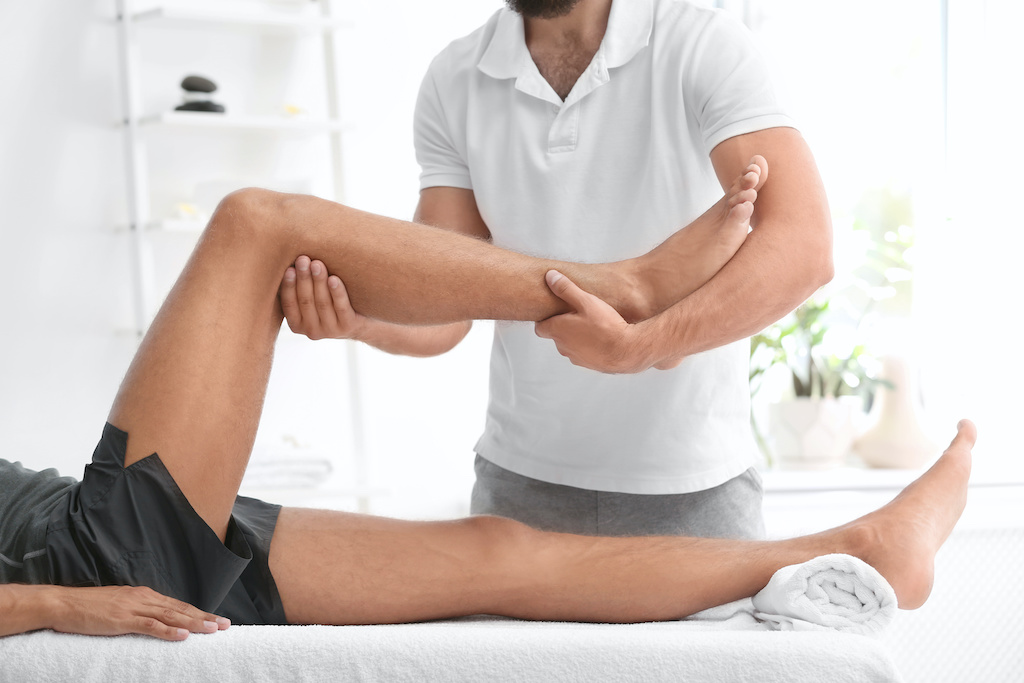Planning sessions with a sports osteopath is a healthy practice already adopted by most athletes. What is the difference between osteopathy and physiotherapy, when should you consult a practitioner and what are the main principles of osteopathy? Find out everything you ever wanted to know about this gentle and effective treatment technique!
Osteopathy and sports

Osteopathy is a holistic treatment technique that involves manual manipulation to increase the body’s mobility and support the body’s functioning, both in terms of range of motion and metabolism (digestion, breathing, etc.).
Why consult a sports osteopath?
As it is designed to maintain the body in an optimal state of functioning, osteopathy is a method widely used by athletes who are constantly seeking to improve their performance. Applied to the field of sport, this discipline brings many benefits:
- The treatment of injury: Osteopathy is a good way to restore the mobility of muscles and tendons gently by finding the origin of the problems encountered, whether localised or at a distance from the injury. Interventions are also focused on stimulating the body’s self-healing mechanisms.
- By working on precise points, such as the neuromuscular bundle, the diaphragm or the joints, osteopathy improves venous return and cardiorespiratory capacities. A better distribution of nutrients to the muscles results in an increase in the performance potential of athletes.
- An osteopath completes their manipulations with advice on diet, sleep and movements to be carried out on a daily basis or during physical activity in order to adapt his postures and avoid injury.
What is the difference between osteopathy and physiotherapy?
Physiotherapy is a technique used in cases of trauma. Manipulations, either manual or with the help of equipment, are carried out locally, in rehabilitation, to facilitate the repair of an injured area and the restoration of its mobility. Conversely, osteopathy always considers the body as a whole, seeking, above all, to act on the origin of the disorders. Different fields of application exist:
- Osteopathy focuses on the musculoskeletal system (bones, tendons, joints, muscles, etc.)
- Cranial osteopathy, which also focuses on the respiratory system.
- Visceral osteopathy, targeting the thorax and digestive organs.
Physiotherapy sessions are mostly prescribed by a doctor, following surgery or injury. Osteopathy can be useful at any time, either preventively or curatively, and sometimes a single session is enough to resolve a functional disorder. The two practices are complementary and offer different advantages.
How does an osteopathy session take place?

An osteopathy session starts with a personalised interview. By asking questions about the symptoms encountered or the objectives sought and by assessing the patient’s physical condition, the practitioner determines which tests to carry out and rules out the risk of interfering with the medical field.
The osteopath then asks the patient to perform certain movements, such as raising the arms or legs, tilting the head, etc. The osteopath will then ask the patient to perform more specific movements. The osteopath may also touch different parts of the body to find the cause of pain or poor posture.
After having shared their observations with the patient, the osteopath presents the manipulations they have chosen, before carrying them out.
During and after the session, it is common to feel discomfort or extreme fatigue due to the upheavals caused to restore balance. Hydrate yourself well, with a hot drink (herbal tea) if the practitioner has performed visceral gestures and follow his advice to recover properly.
Sports: When to consult an osteopath

Although osteopathic sessions are often carried out after an injury or to eliminate discomfort, the best time to resolve minor imbalances is when you are well. It is advisable to plan a preventive session during the year, with the option of consulting an osteopath quickly in case of trauma.
Osteopathy as a preventive measure
The more a sports osteopath knows how your body works, the better they will be able to intervene to help you improve your performance. Make an appointment as a preventive measure to establish contact with an osteopath and carry out a preliminary session, explaining your athletic goals to him/her. This first meeting is ideal for them to detect possible postures to work on or points that may hinder you in your practice.
On the other hand, it is not advisable to go to your osteopath just before a competition: The structural modifications carried out could be counter-productive and disturb you during the event. The desired changes are more effective over time, so plan the session in advance to take advantage of them throughout the preparation phase.
Osteopathy as a cure
In the event of a major sports injury, you should first consult your doctor, who will guide you to a physiotherapist, if necessary, to begin rehabilitation. Osteopathy can intervene as a compliment, but cannot act effectively on an injured or overly injured area. For acute or localised pain, however, it is of great help: Your osteopath will certainly offer you several sessions in close succession to work on the origin of the pain and to relieve it.
Check out our Health & Fitness page for more advice.
